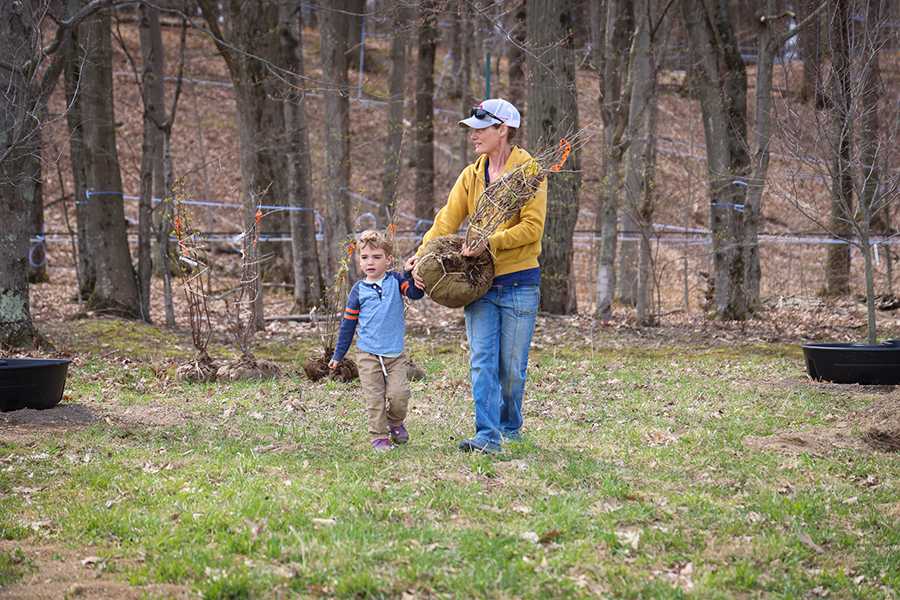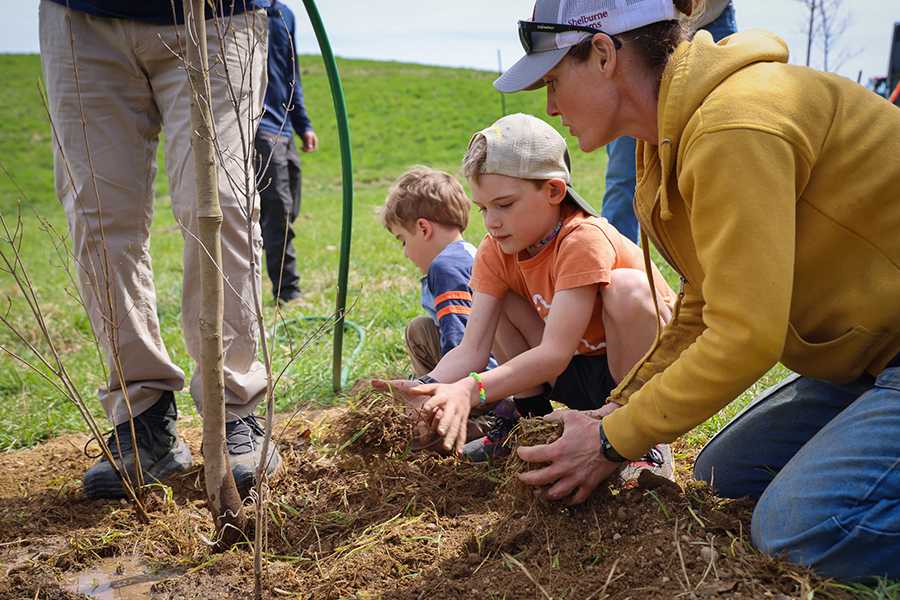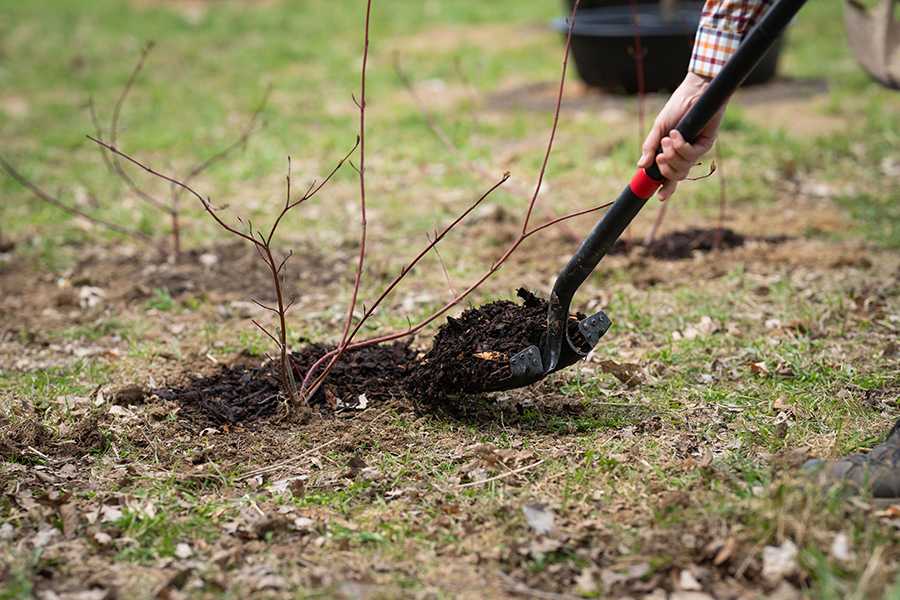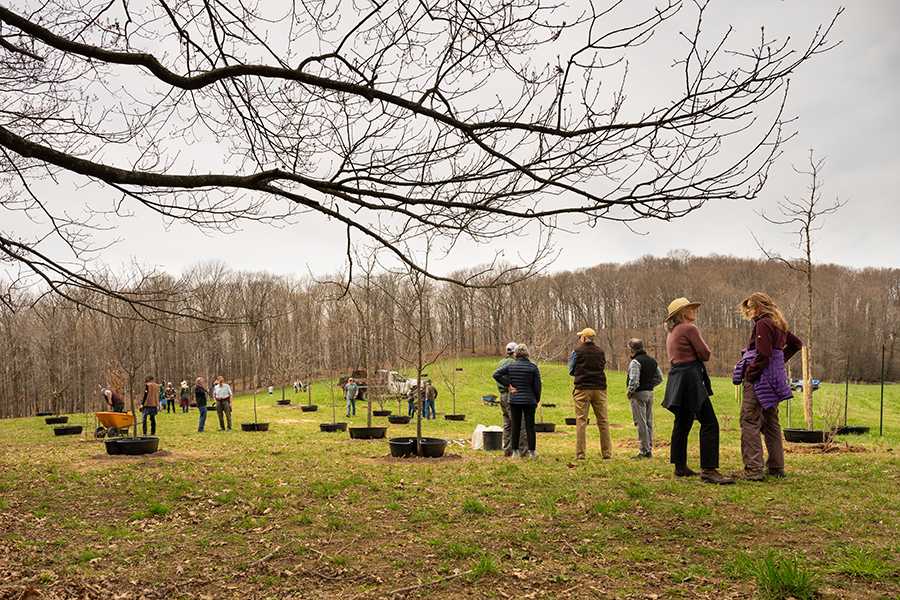The Marshall Woods project is very exciting and seems well designed with diversity and the 8' deer fence!
One question I have: were evergreen trees and shrubs considered for this location or other SF locations? One plus to evergreens is their year-round photosynthesis and carbon capture.
What on the Farm? Marshall Woods
It’s not often that you get to plant a forest. But just past Sheep’s Knoll beyond the Farm Barn, that’s what we’ve done. Or at least started. (Forests don’t grow overnight!)
“Marshall Woods” is 3.5 acres flanking the edge of Butternut Woods. This April and May, we planted the grassy area with over 200 native trees and shrubs. Walking our trails, you may see the young saplings, their individual watering planters, and the 8-foot high deer fence protecting them all as they get established.
Marshall Woods was named for Marshall Webb, to honor his love of woodlands and of Shelburne Farms writ large, and to acknowledge his commitment to turning vision into action, especially in the fight against climate change. The wedge of woods is a small symbolically important part of our goal to achieve Net Zero on the farm by 2028. As Shelburne Farms Board member Nan Jenks-Jay noted during one of the tree plantings, “This warms the heart, but cools the planet.”
Marshall Woods Committee member Bob Kinzel concurs, “This is exactly the kind of initiative that Marshall would be so pleased with—it's an incredibly positive action that will affect generations to come.”
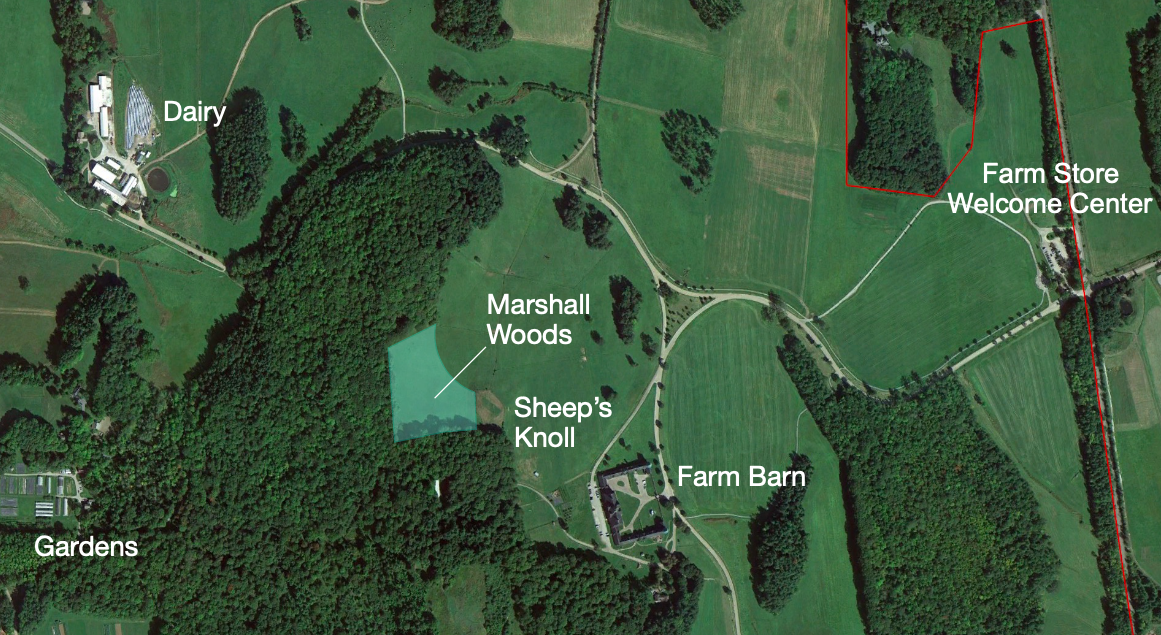
“We get to 'paint' this forest–essentially create a forest–so that it’s structurally and species diverse,” explains Shelburne Farms Woodlands Manager Dana Bishop. First, that means choosing species that dominate the adjacent Butternut Woods, mostly sugar maples. But anticipating a warming climate, we’ve included hickories and oaks, too.
Then there’s structural diversity: trees that will grow to various heights to help create a rich forest ecosystem. In addition to the maples, oaks, and hickories, we’ve included butternuts and black walnuts to create a mature overstory. Mid-size trees include eastern hophornbeam, musclewood, and more southerly species that should do well in a changing climate: tupelo, pawpaw and persimmon. “I’m excited to learn and watch these trees grow,” says Dana. For the understory, we chose shrubs like witch hazel, dogwoods and nannyberry.
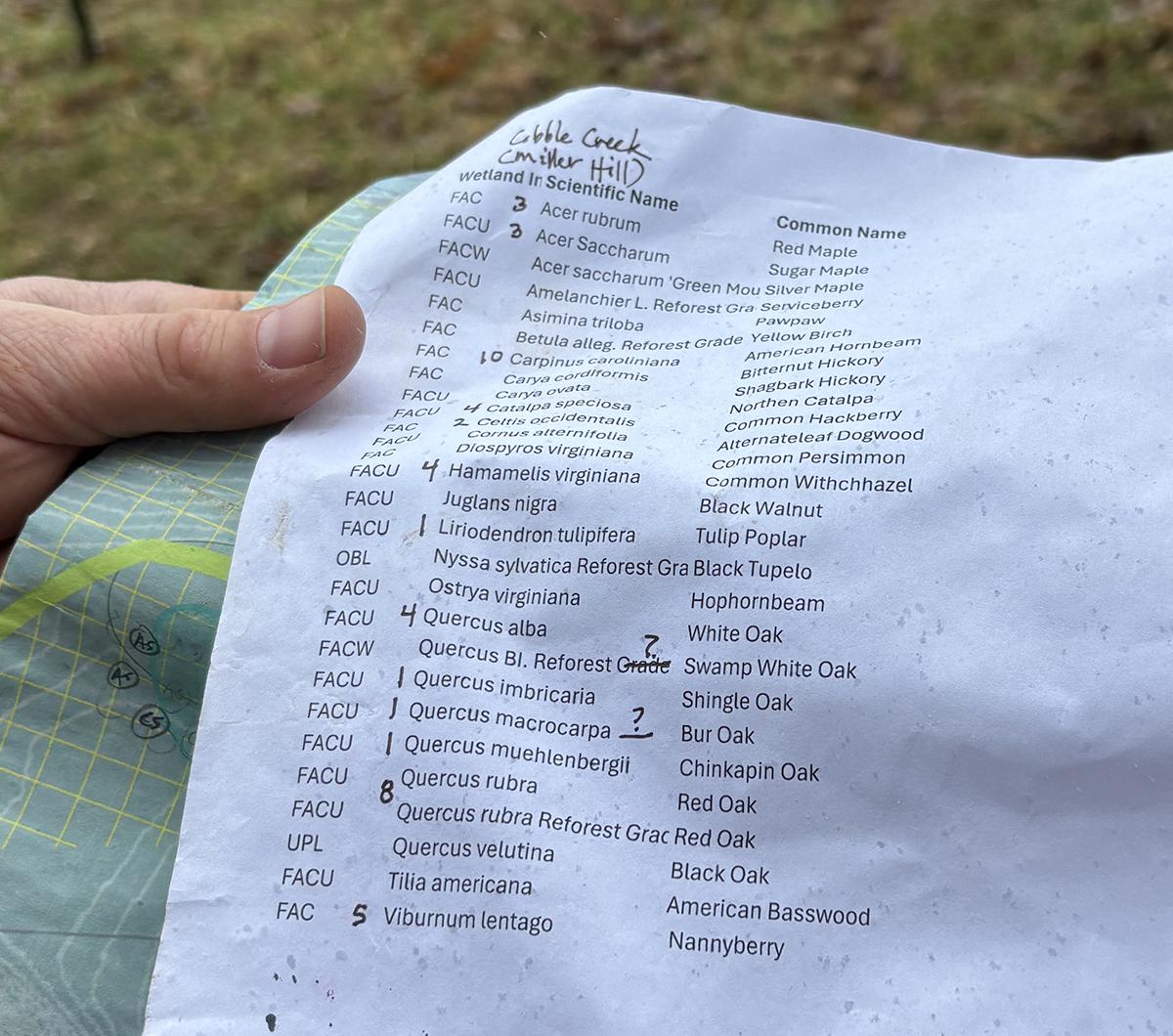
How much carbon does a tree store?
For Dana, planting the trees was a full circle moment. “Before I even started working here, I wrote some ecological recommendations for the farm that included planting trees in this section of field to improve the interior habitat of Butternut Woods,” she recollects. “It’s wild to see that idea come to fruition 15 years later. This project means so much to me and this community that I’m a part of.”
You’re part of this community, too! You’re invited to stroll the walking path that joins Marshall Woods to Butternut Woods. Visit the trees over the months and years ahead (more will be planted over time), and imagine the future that they’ll bear witness to. Then help us build that future together.
Special thanks to Miller Hill Farm and Branch Out Burlington for donating trees, to Patricia O’Donnell and Greg De Vries of Heritage Landscapes for helping to plan out the site, to Treeworks for planting the trees, and to the Marshall Woods Committee for spearheading fundraising for the project.
We Can't Do It Without You!
Comments
Great question! We worked with Heritage Landscapes on the design of Marshall Woods, and evergreens were considered for both habitat diversity and visual diversity. In the end, since there were already evergreen knolls in the viewshed of Marshall Woods, we chose to plant trees that were consistent with the adjacent forest stand (Maple, Hickory, Oak). Oak will do really well with the changing climate and is top of the list for carbon sequestration!


